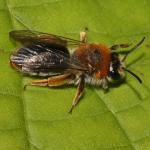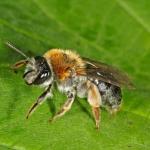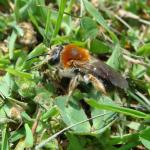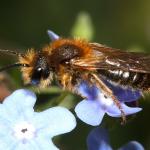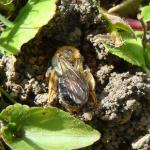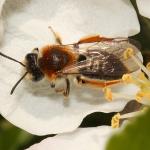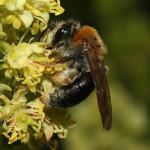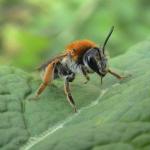Andrena albicans Misident; Andrena convexa Schrank, 1781; Andrena haemorrhoidalis Christ, 1791; Andrena haemorrhousa Gmelin, 1790; Andrena hiberus Harris, 1776; Andrena nebulosa Gmelin, 1790; Andrena salicis Verhoeff, 1890; Andrena sordida Scopoli, 1763; Andrena tranquilla Müller, 1776.
This Andrena is a very widespread, spring-flying species. Females are very distinctive, with a bright, foxy-coloured covering of hairs on the thorax and a similarly-coloured tuft of hairs at the tip of the abdomen, which is otherwise almost completely hairless and shining black. In common with most other Andrena the males are much less distinctive. However, close examination with a hand lens will reveal a dark brown spot in the middle of the otherwise orange-brown hind tibia. The thorax in fresh examples is also covered in foxy-coloured hairs, but these are much less bright than those of the females.
This species is found throughout Britain and Ireland.
Widely distributed in Europe, although absent from parts of the extreme south such as Portugal, Spain, Sardinia and Sicily.
This species is not regarded as scarce or threatened.
There appear to be no habitat restrictions for this species, beyond mountainous regions; even there it can be found in the valleys.
March to June.
This species nests singly in short swards, and along the sides of trackways.
A range of flowers, probably most often found, in either sex, at those of hawthorn.
Nomada ruficornis (Linnaeus) is the special cleptoparasite of this bee.
2016



